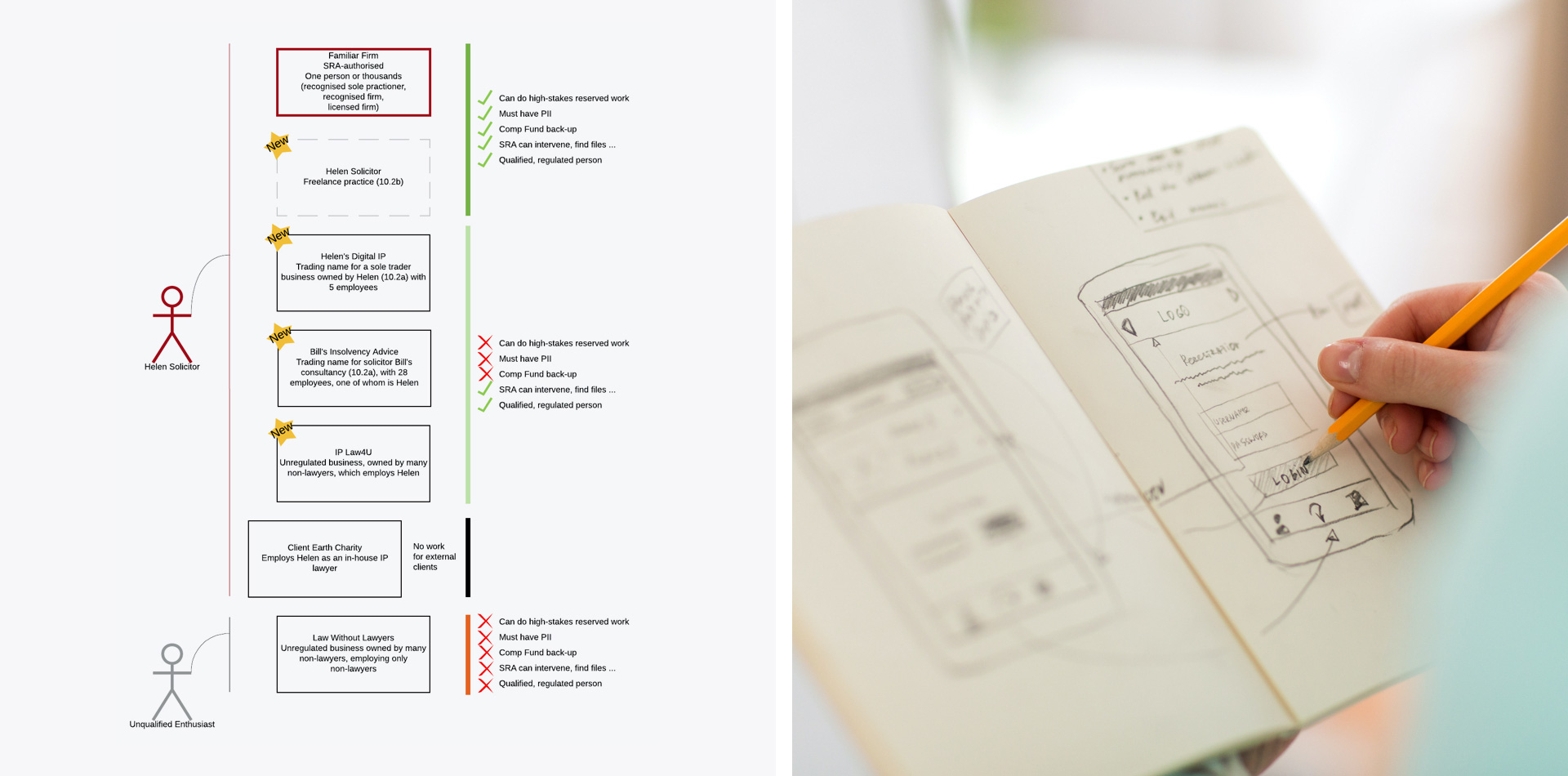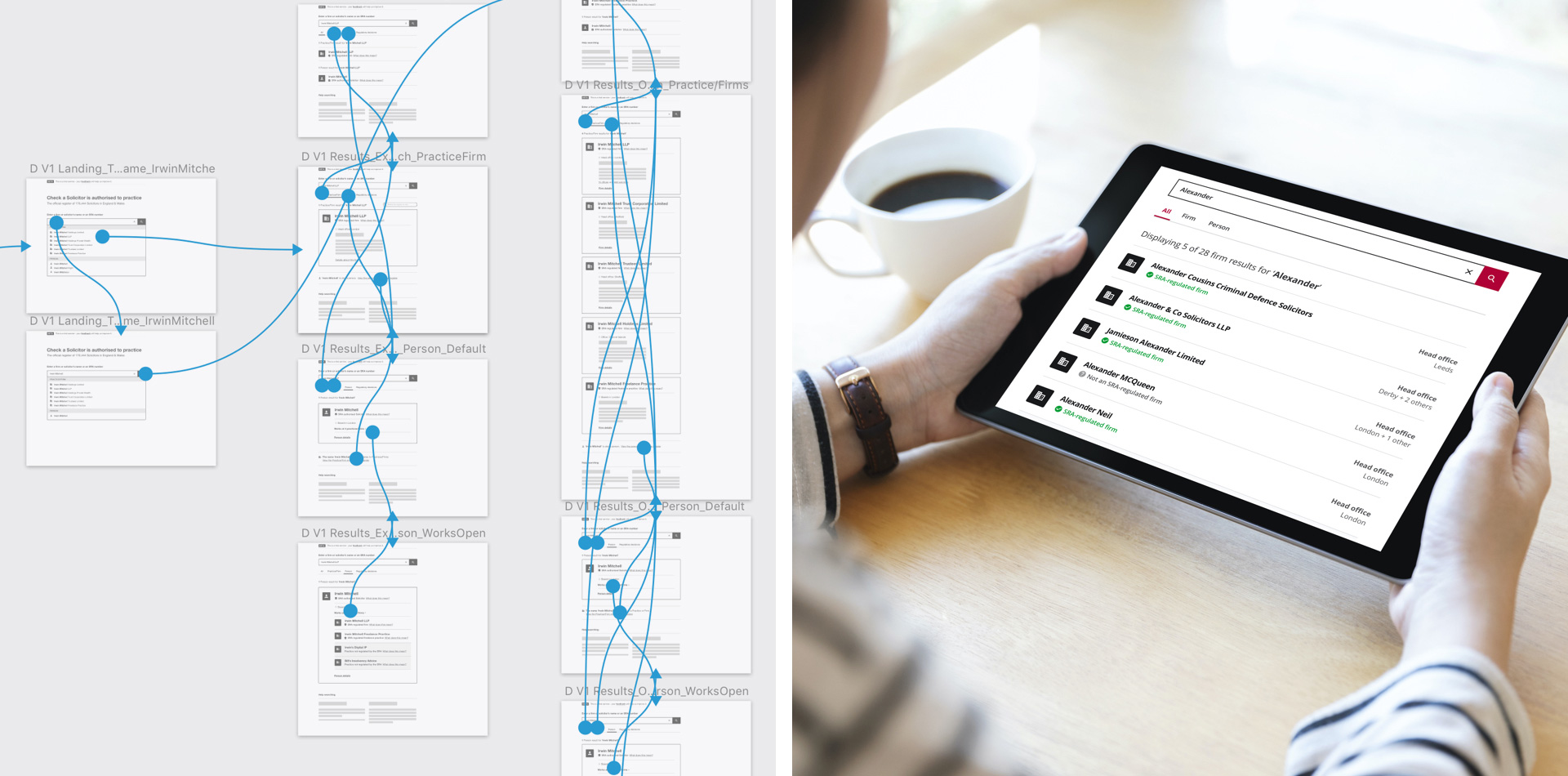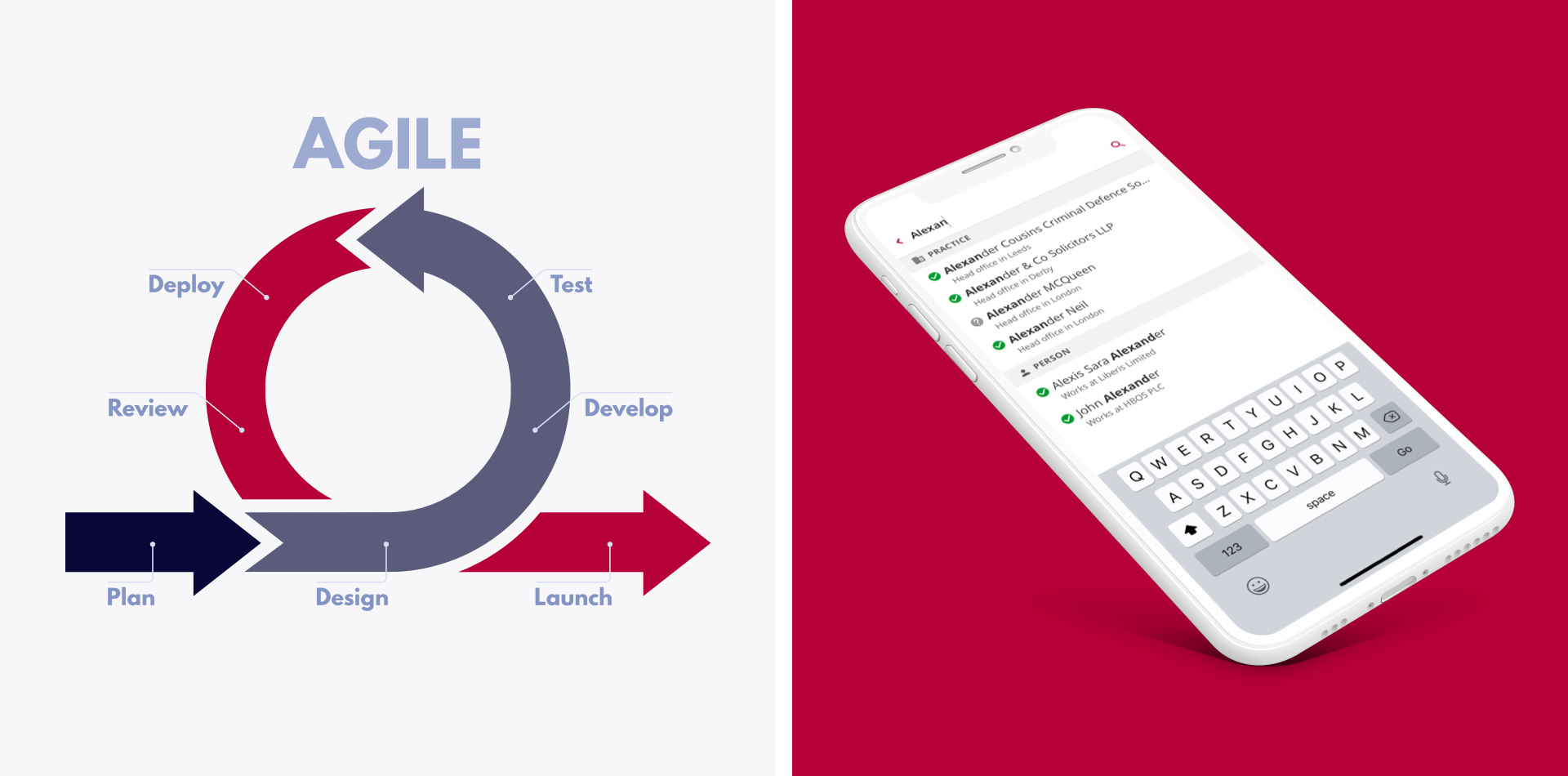Designing an easy-to-use digital register for consumers & legal professionals
4000+
Avg number of searches per day
75%
of users find the service useful
Avg number of searches per day
of users find the service useful
SRA
Regulatory body
6 weeks
Project management
User research
Design direction
Wireframing & prototyping
Interaction design
The Solicitors Regulation Authority (SRA) is the regulator of solicitors and law firms in England and Wales. At the end of 2019, the SRA published a new set of Standards and Regulations alongside a digital register to provide the legal services market with an online validation tool for the people and firms it regulates.
We were briefed by the SRA to undertake user research to validate a range of user needs for the service and to design an easy-to-use service given the purpose of their register and the data set they had available to publish.

We kicked off the project by spending three days on site with key product managers and stakeholders at the SRA to fully immerse ourselves in new regulations for solicitors and law firms and the available data that they were planning to publish. We also reviewed existing insight and spent time clarifying the purpose of the register, its dependencies and the scope of features that would make up the launch of a Beta product.
With six weeks to complete both the research and design phase, in true agile spirit we hit the ground running with a plan of user research and design activities that we were able to get started with almost immediately.
We ran interviews and usability testing to build up a picture of user needs and gain insights into consumers’ understanding of a new validation service for the solicitors and law firms that the SRA regulates. We played back our findings to the SRA on a regular basis, allowing us wiggle room to modify and change direction as we moved forward.
While running user research, we began creating low-fidelity prototypes to quickly explore the design of the key features of the service. Working with an example data set and some pre-validated user needs, we were able to mockup page flows of the service and start thinking about the hierarchy and presentation of data.

By validating our designs early and often with users, we were able to get feedback to build into subsequent design iterations and re-test. At this point in the project, key themes were starting to emerge from the user research, and it was important to be able to find out quickly whether our ideas were meeting user needs.
Two key challenges were how should we design a search tool that would accommodate both consumers and legal professionals and how best should complex data be presented in order to be of most use for these two very different audiences.
Once we understood the data set that the SRA would be publishing to the register, it became apparent that we would need to design for a wide and complex range of outcomes for both solicitors and law firms.
We used atomic design principles to document the different states of each component and the combinations of data that would make up solicitor or law firm entries in the register. During the design phase this allowed us to easily organise and update labels and messaging on the fly. This modular system also acted as the single source of truth for any discussion about the project and the SRA’s subsequent agile development of the service during the following months.

Running the project with agile methodology allowed us to work quickly and efficiently. In just six weeks we were able to validate a prototype of the service and provide the SRA with the confidence that the solution they would be developing would meet the needs of their users.
The number of searches per day run by users of the Solicitors Register steadily increased throughout 2020, rising to an average of 4,000 per day within 12 months of the first public beta release. An independent study of consumer behaviour in mid-2020, which surveyed 3,500 recent users of legal services, reported that 75 per cent of those who had used the register found it useful.
To learn more about experience design, talk to our UX Director Will on 0203 8650705 or email will@dotcentric.co.uk
